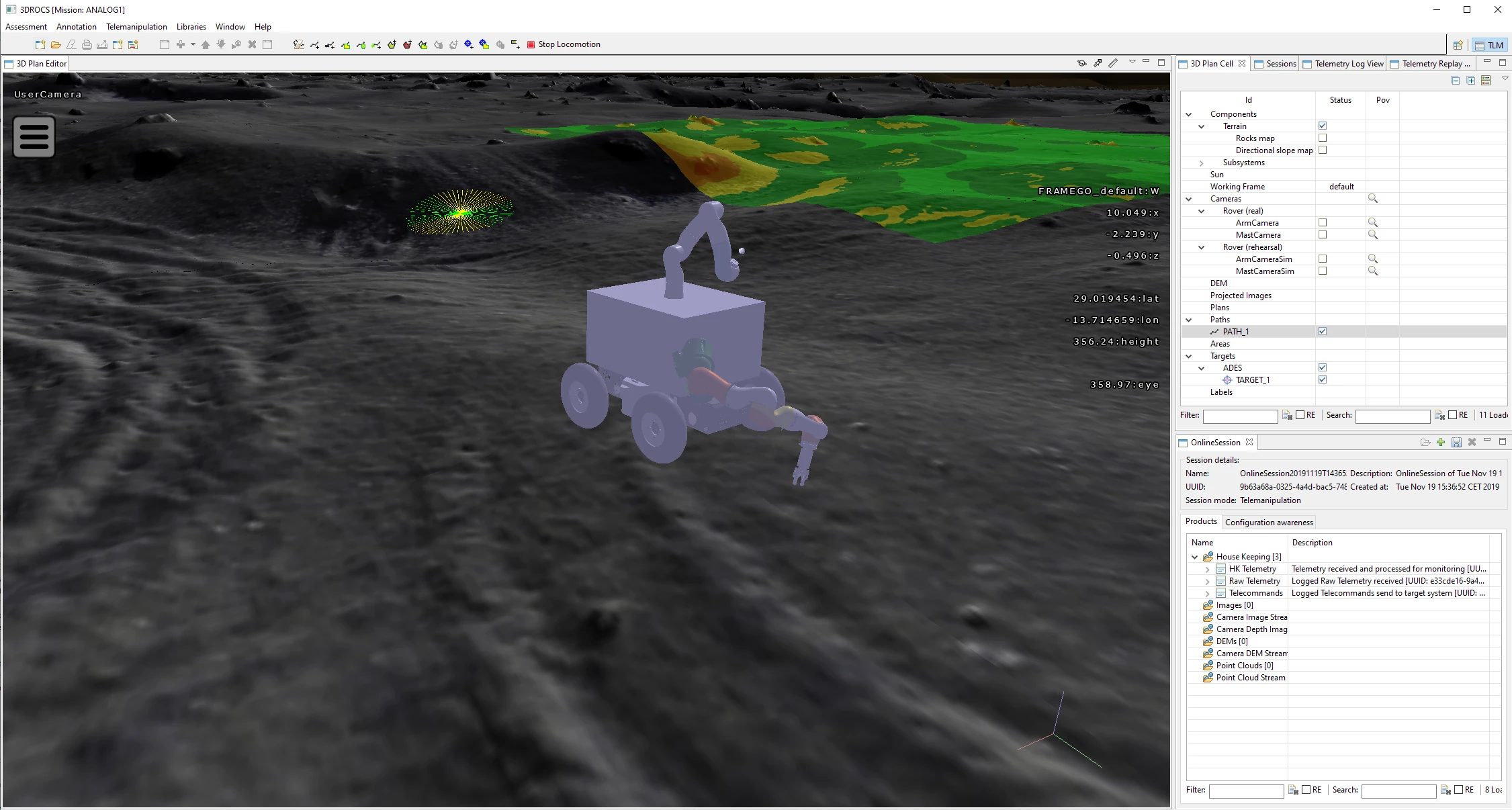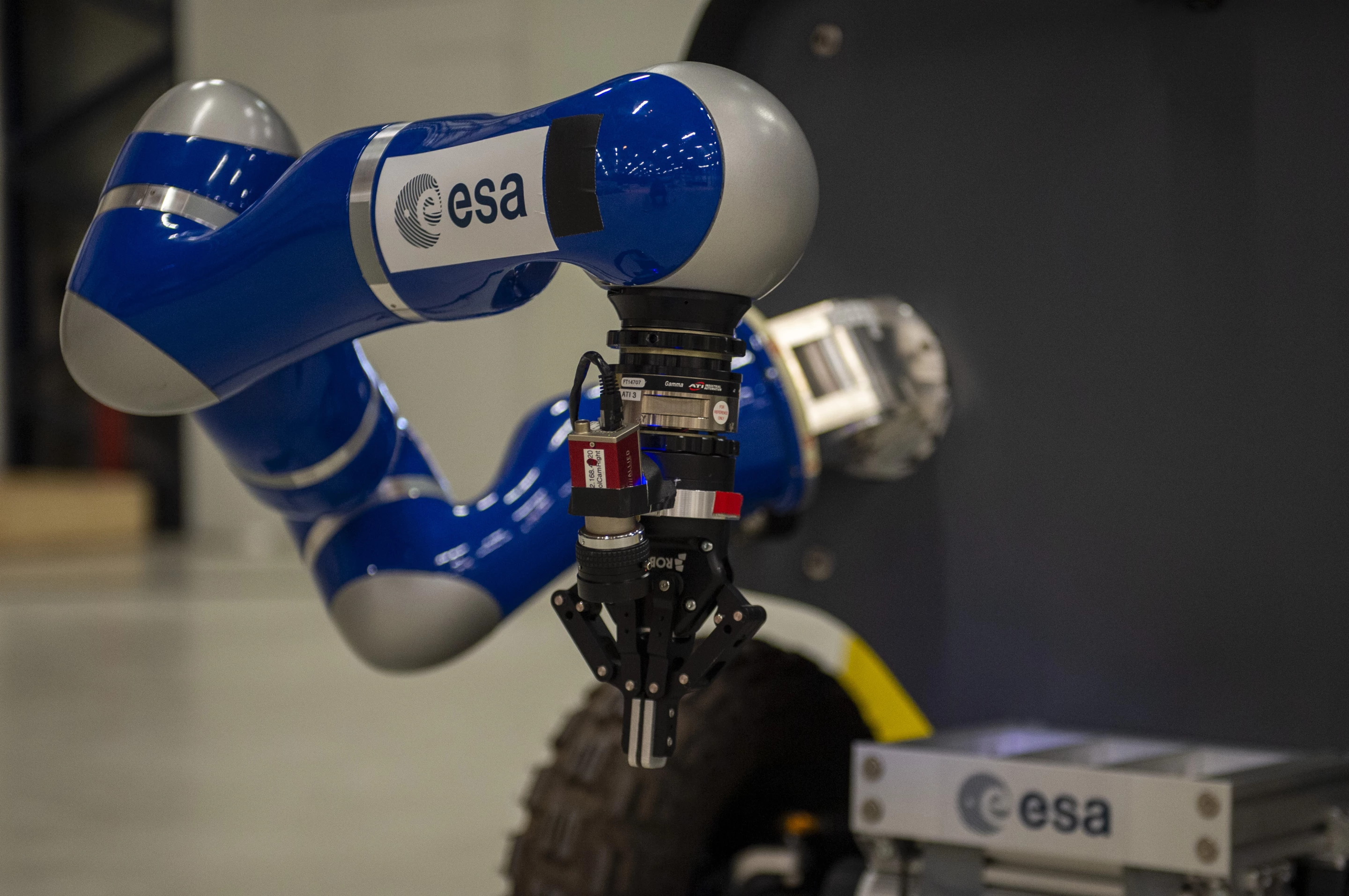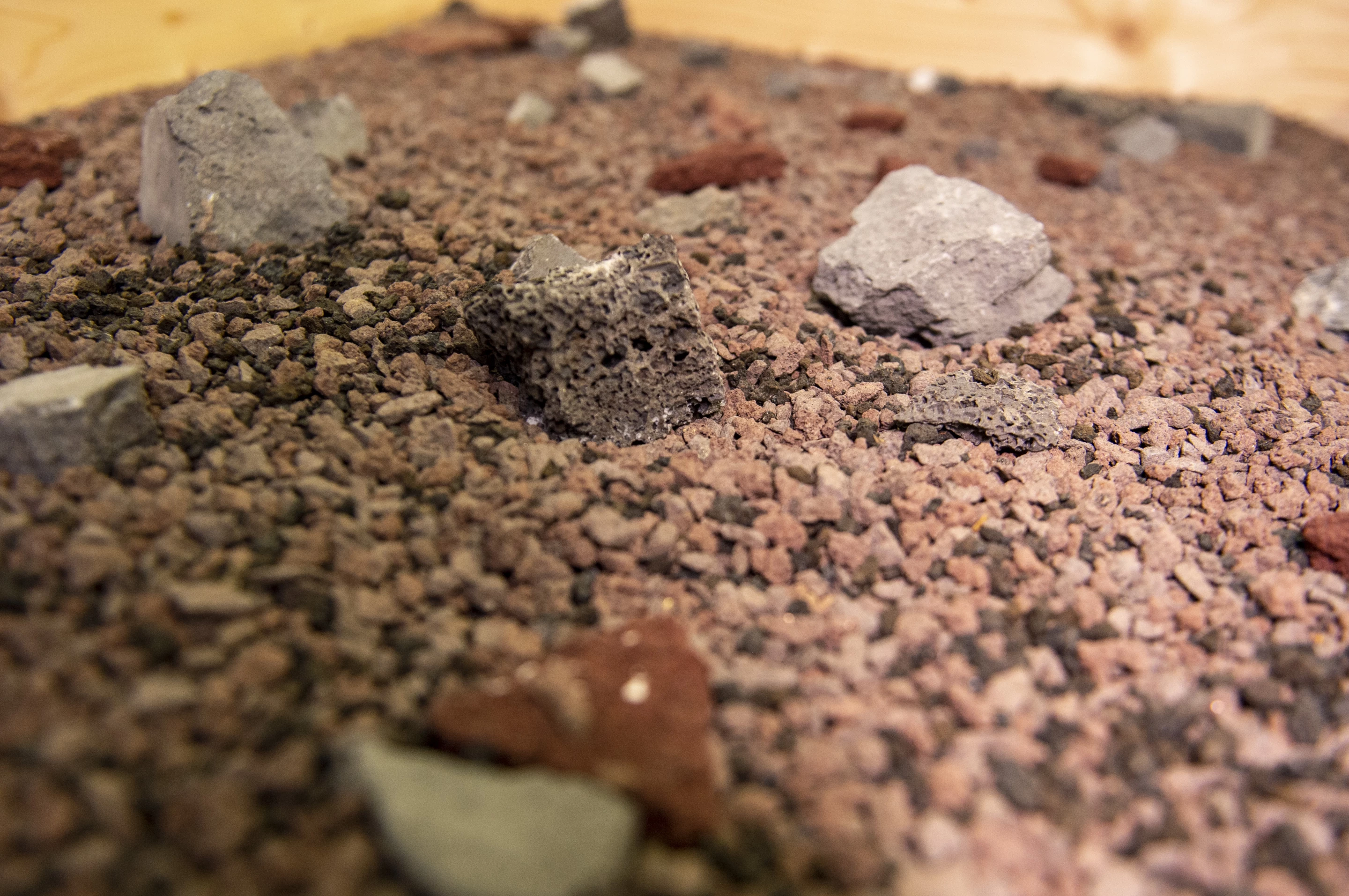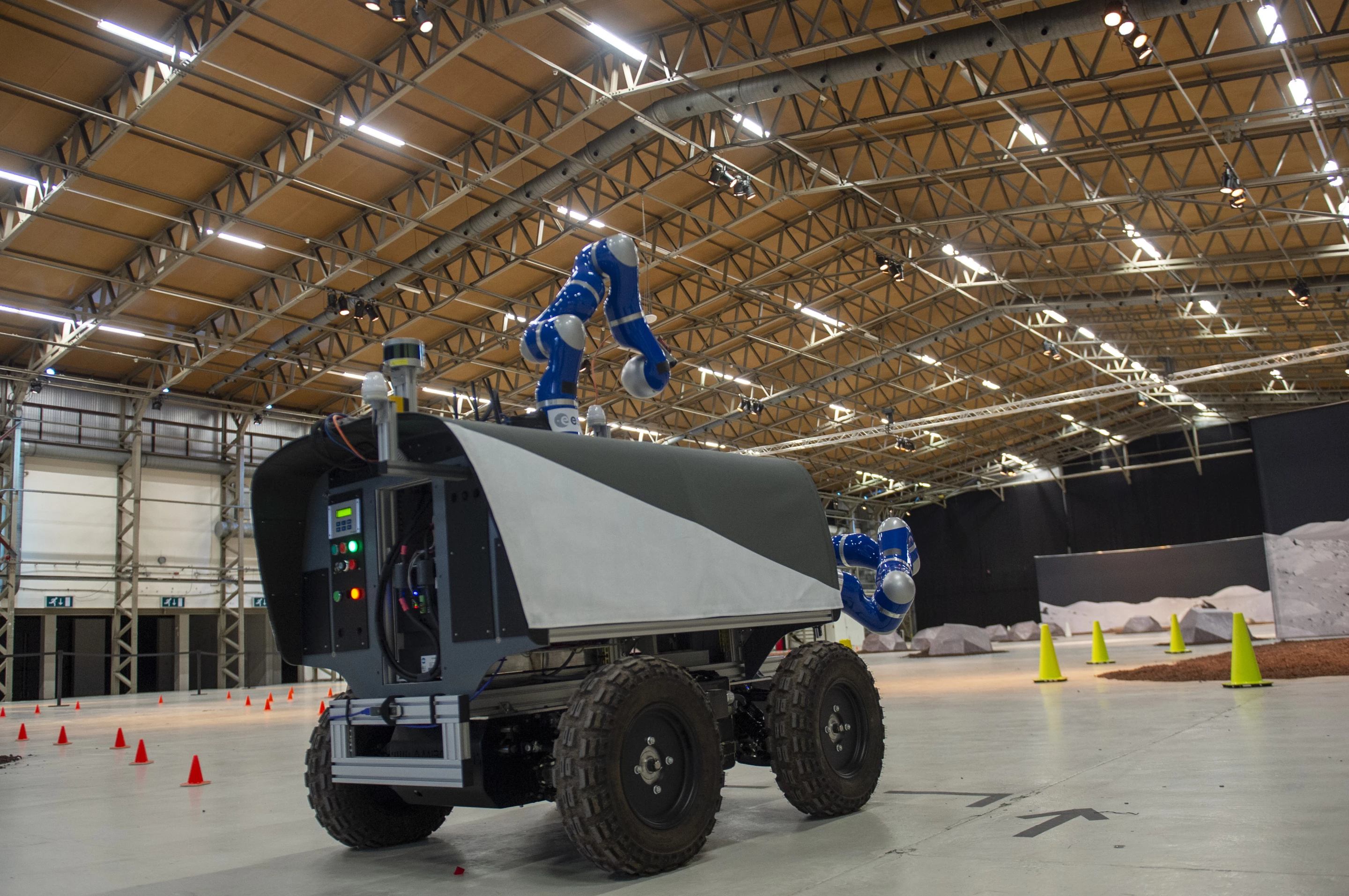An ESA astronaut in orbit has taken a new prototype lunar rover for a spin on Earth as part of the runup to a full-scale test this week. On November 18, 2019, from aboard the International Space Station (ISS) 250 mi (400 km) above the Earth, Luca Parmitano took control of the Analog-1 rover for a half-hour spin around an obstacle course in the Netherlands. It was a preliminary systems test of technologies that could one day be used to remotely explore the Moon and Mars.
With the current state of technology, planners for lunar and planetary missions have only two strategies to choose from. On the one hand, they can send astronauts to the surface or they can send robotic explorers. The problem is that both of these approaches have their own advantages and disadvantages.

A person is much more intelligent, physically articulate, and flexible than a robot, but sending astronauts to the surface of the Moon or Mars is extremely risky and expensive, and working in a spacesuit is the equivalent of deep-sea, mixed-gas diving on Earth, with all the time and trouble that entails. A robot, on the other hand, is much cheaper and safer to send, but it can take weeks to do what a human can achieve in minutes.
Analog-1 is a way of squaring the circle by combining the best of both worlds. Currently, missions to the Moon and beyond must be almost entirely autonomous because the time lag is too great to allow for direct remote control. Commands sent to a Moon rover would take a second and a half to arrive, while ones sent to Mars would take many minutes – much too long to be practical.
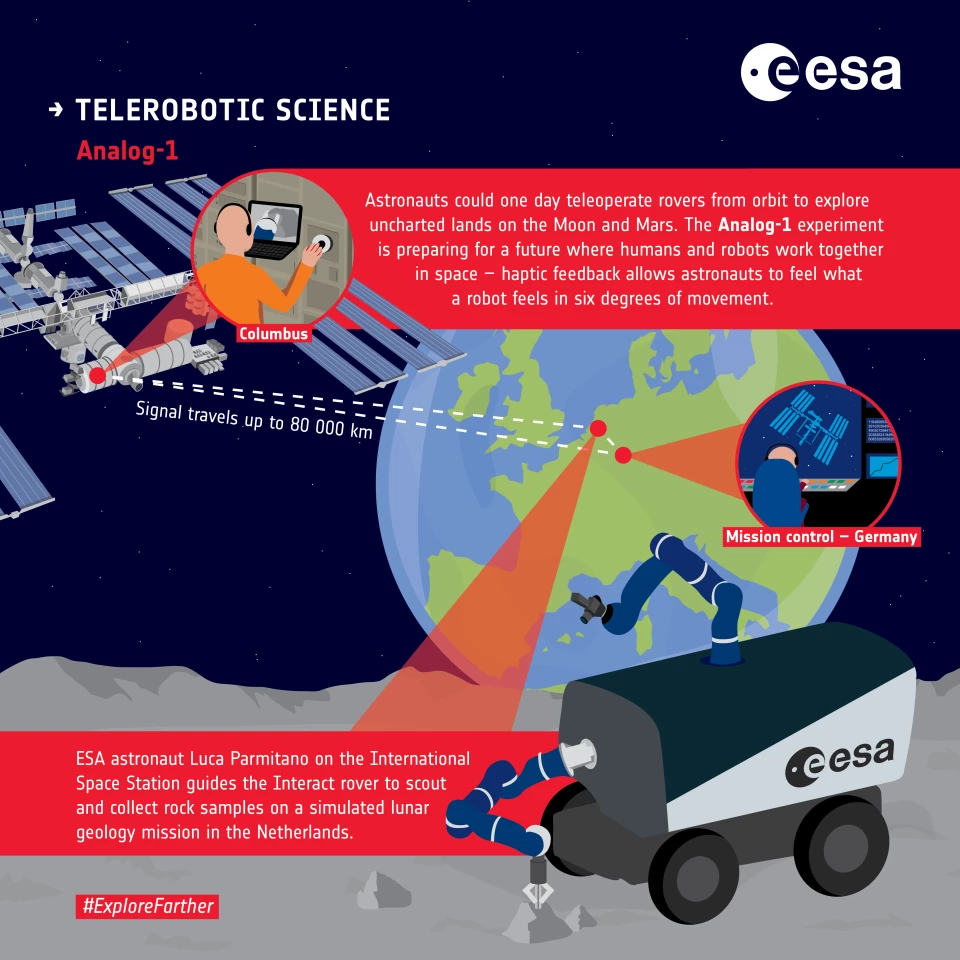
The approach that ESA is testing is to send a robotic rover from an orbiting spacecraft or a surface base, where astronauts can control it directly with a delay of only a tiny fraction of a second. To help with this, the control system on Analog-1's system has a joystick with six degrees of freedom that incorporates forced feedback, so the human controller feels the stresses on, for example, a robotic arm directly, and can instantly react.
"Even on the Moon, preparing an astronaut for a sortie takes hours just to get into a suit and prepare the airlock," says Jessica Grenouilleau, Meteron project lead at ESA’s Exploration Systems Group "By giving astronauts the possibility to control the robots nearby in the safety and comfort of their base or orbital spacecraft, much more can be achieved. This first test indicates an excellent adaptation between the crew and the robotic system, making this combination better at a wide range of tasks."
The initial test was a simple, mapped out checklist of moves, but the full test scheduled for Monday, November 25, starting at 11:00 am CET (10:00 GMT), will have Parmitano working in conjunction with a science team based at the European Astronaut Centre in Cologne, Germany, to move the rover to three sites.
Source: ESA

